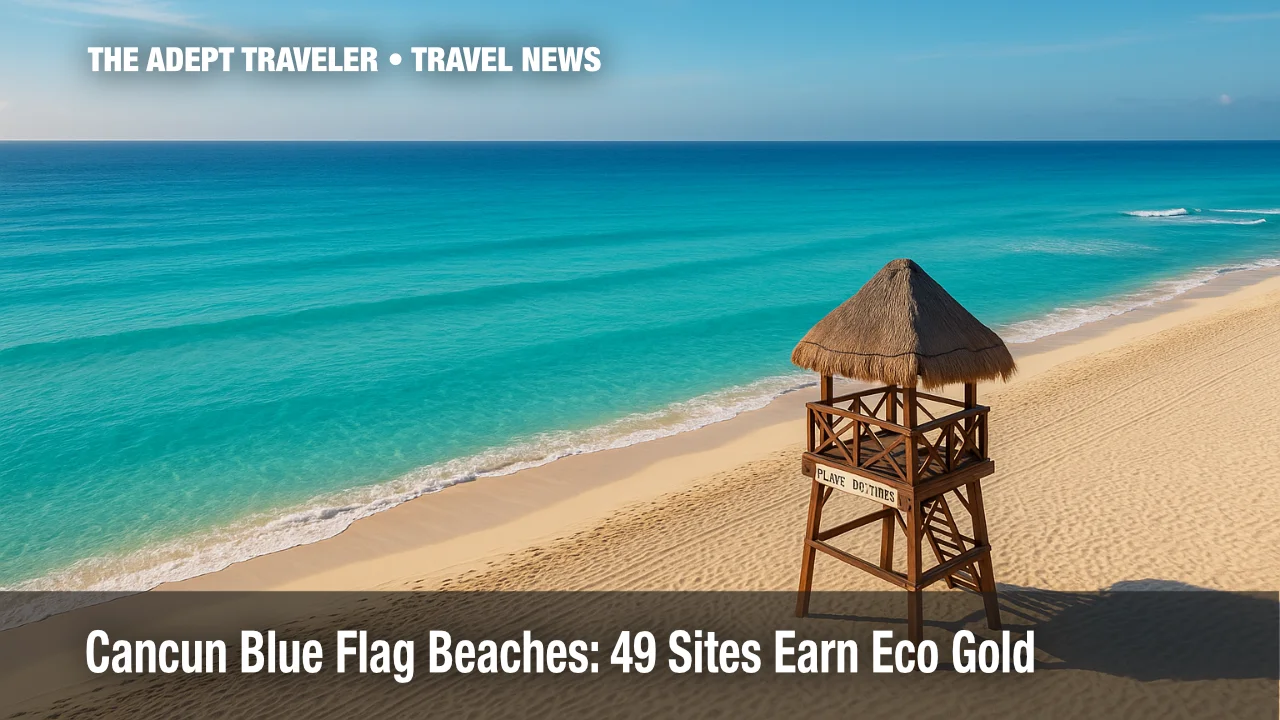Cancun Blue Flag Beaches: 49 Sites Earn Eco Gold

With 49 sparkling sites now flying the famous eco-label, Cancun Blue Flag beaches have claimed the national crown for coastal sustainability. The European Foundation for Environmental Education (FEE) renewed 47 existing certificates and added two newcomers during a ceremony this week, underscoring Cancun's reputation as Mexico's most environmentally rigorous resort hub. The recognition covers popular stretches such as Perlas, Chacmool, Marlin, Ballenas, and Playa Delfines, plus four leading hotels and a sailing operator-proof that Cancun beaches continue to blend white sand beauty with verifiable green practices.
Key Points
- 49 Cancun sites now carry Blue Flag status.
- Two locations joined the list for the first time.
- Four major resorts and one tour operator certified.
- Why it matters: Travelers gain cleaner water, safer facilities, and clearer eco signals.
Cancun Blue Flag Beaches Snapshot - How It Works
Created by FEE in 1987, the Blue Flag certification evaluates beaches, marinas, and tour operators on 33 criteria across four pillars: environmental education, water quality, environmental management, and safety plus services. Inspectors test bacteriological levels, verify lifeguard coverage, assess waste-handling plans, and require displays that teach visitors about local ecosystems. To keep the flag, each site must pass annual audits and spot checks. Certificates last one season, so even long-standing awardees like Playa Delfines start from zero every year, incentivizing continuous improvement.
Cancun Blue Flag Beaches Background - Why It Matters
Cancun adopted the Blue Flag program early in the 2010s, partly to counter headlines about sargassum infestations and rapid hotel growth. Quintana Roo authorities formed a public-private task force that paired local biologists with resort managers to standardize water-testing schedules and shoreline cleaning. By 2016 the city had 22 Blue Flag beaches; by 2020 it surpassed 35 as resorts invested in accessible ramps, solar showers, and turtle-nest monitoring. Each renewal signals that previous efforts did not lapse, while new flags show that additional stretches meet the same bar, expanding traveler choice without sacrificing quality.
Cancun Blue Flag Beaches Latest Developments
The 2025 awards ceremony, held on Playa Marlin, confirmed 49 valid flags-an increase of two over last year and the highest tally of any Mexican destination.
Two New Sites Join the Lineup
The newcomers-Punta Nizuc public beach and the recently restored Coral Marina-earned first-time flags after year-long upgrades. Punta Nizuc installed offshore buoys to shield seagrass beds from boat propellers, while Coral Marina revamped its pump-out stations and switched dock lighting to turtle-friendly LEDs. Both locations also launched bilingual signage explaining reef etiquette, helping visitors understand how small choices-such as reef-safe sunscreen-affect marine health.
Hotels Raise the Standard
Four beachfront properties-Fiesta Americana Condesa, Live Aqua, Iberostar, and Flamingo-retained their flags by tightening internal audits. Waste-sorting stations doubled, single-use plastics dropped by 70 percent, and each resort committed to quarterly beach clean-ups open to guests. Management teams say Blue Flag status drives bookings from eco-conscious travelers, giving them reason to keep investing in certifications that go beyond marketing claims.
Cancún Sailing Leads on the Water
Cancún Sailing remains the city's only Blue Flag-approved tour operator. The company installed hybrid-electric outboards on its newest catamaran, offers reef briefings before every snorkel stop, and offsets fuel use through local mangrove plantings. By meeting the same 33-point checklist that applies to shore sites-plus strict waste stowage rules-its vessels give visitors a low-impact route to Isla Mujeres and the MUSA underwater museum.
Analysis
For travelers, a Blue Flag acts like a quick-scan trust badge. Water tests meet European bathing standards, so swimmers face lower health risks. Mandatory lifeguards and emergency equipment reduce response times, a comfort for families. The certification also helps solve decision fatigue: with 49 flagged spots, visitors can pick beaches for vibe-lively Marlin, laid-back Perlas, or panoramic Playa Delfines-without wondering which locations cut corners on cleanliness. Resorts use the flag to justify modest rate premiums, yet the payoff often appears in better-maintained facilities and free nature tours. From a destination standpoint, concentrated flags shield Cancun from "over-tourism" critiques, since every awardee must cap visitor numbers and monitor environmental impact. Travelers who crave deeper context can join Friday morning dune walks led by municipal ecologists or book a hybrid catamaran through Cancún Sailing. For a broader planning view, see our Cancun travel guide, which tracks seasonal weather and sargassum forecasts.
Final Thoughts
Cancun's latest haul of Blue Flags confirms that sustainability and mass tourism can coexist when local authorities, resorts, and operators share the workload. Beachgoers should look for the blue-and-white pennant near the lifeguard tower before setting down a towel, carry reef-safe sunscreen, and respect marked turtle nests. With 49 certified sites, Cancun Blue Flag beaches offer almost endless choices-but consider rotating among a few to spread out foot traffic and keep every shoreline pristine. Pack a reusable water bottle, arrive early for parking, and enjoy Mexico's most decorated stretch of sand.
